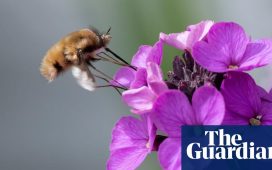A bushfire has burned through 3,000 hectares of the internationally significant Macquarie Marshes, placing a question mark over the long-term viability of a key section of the wetland, according to a leading expert.
The New South Wales National Parks and Wildlife Service has confirmed the fire hit the northern reed bed in the wetlands, which are listed under the Ramsar convention covering wetlands of international importance.
The marshes, in central north-west NSW, are considered one of Australia’s most important inland nesting sites for waterbirds. The reed bed is key habitat for the endangered Australasian bittern.
Professor Richard Kingsford, director of the Centre for Ecosystem Science at the University of New South Wales, said: “I am very concerned about the long-term viability of that reed-bed swamp in the northern part of the wetland.
“We have already lost the southern reed bed because there wasn’t enough water. We have to avoid going the same way with the north. Those reed beds will burn at times, but the worry is how hot the fire is. They can go down to the roots and that’s when you get damage.”
Sign up to receive the top stories in Australia every day at noon
Kingsford surveyed the “incredibly dry” marshes two weeks ago, and told Guardian Australia that in an area where they would expect to see thousands of birds, they saw only four – two masked lapwings and two pied stilts.
In 37 years of surveys, Kingsford said he was aware of only one other year, during the millennium drought, when numbers had been so low.
“We think that in these big dry periods, a lot of the birds are just dying,” he said.
“We have heard a lot about the way that rural Australia is hurting, and understandably so, but this is a clear example of the environment hurting as well.”
The drought-hit wetlands are thought to have existed at their current site for between 6,000 and 8,000 years.
In 2009, the government notified Ramsar the wetlands had undergone a change in “ecological character” since they were first listed in 1986. Changes to the river flow caused by water extraction and alteration of channels and floodplains was a key threat.
A NSW Rural Fire Service spokesperson said it was notified of the fire at 1.25pm on Saturday afternoon and the blaze was contained by 10am on Sunday morning. So far the fire has burned across 3,000 hectares.

Garry Hall, a livestock farmer and fourth generation landholder beside the marshes, said there had been no environmental water delivered to that section since around November-December 2018.
He said: “This is a critical site and without water for 12 months, it’s now also attractive for fires. Because of competing water demands upstream, this could have long-term consequences.”
Hall, president of the Macquarie Marshes Environmental Landholders Association, said even if rains did come, other upstream demands would likely take precedence for water allocations before the marshes.
He said during the federation drought in the 1900s and the world war two drought, rains had flowed down the Macquarie River into the wetlands.
“But now, with upstream dams, those flows will be redirected elsewhere. My concern is that gradually the ability for the reed bed to bounce back and provide the critical function will be under threat.”
A NSW National Parks and Wildlife Service spokesperson said the fire had started following a lightning storm and burnt the main reed-bed area, which was part of the Ramsar site.
The spokesperson said: “The Macquarie Marshes has a long history of wildfire, with sections of the main reed bed burning in previous years and also being the subject of hazard reduction operations.
“The reed-bed area is resilient to fire and typically responds well post fire, after rainfall.”













